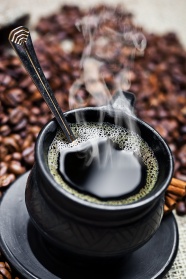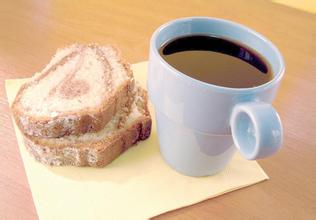There are several ways to treat coffee beans.
Honey treatment is a complex, time-consuming and difficult processing method. The first step is to select the best fruit, then peel off the flesh to leave the endocarp, which is the core of the honey treatment. The endocarp is rich in sugar and sourness, which slowly penetrate into the beans during drying. The second step is drying, which is also the most important condition for producing high-quality coffee beans. The drying time is very important, if the time is short, the sweetness is not good; after a long time, the coffee will be moldy, and extra care is needed.
So how long does it take? If you want to get it right, you need to be closely watched throughout the whole process. First, manage the sun area. Second, turn the coffee beans every few hours so that the beans are evenly dried. Shake the drying bed from time to time for about a week to turn the coffee. During the honey treatment process, due to the influence of temperature and humidity difference in the morning and evening, it takes a long time to complete the solarization. After the sun is done, you can shell and bake.
What is the difference between yellow honey, red honey and black honey?
According to the time of sun exposure and the amount of pectin, the three are distinguished, and the amount of pectin and endocarp determines the time of sun exposure. "Yellow honey" is with 25% endocarp,"red honey" 50%,"black honey" 100%. Therefore, from "yellow honey" to "black honey", the drying time required is longer, and the management requirements are more stringent.
If you must pick out the pros and cons of the three, the best taste is "black honey", because the amount of endocarp is the most, the taste is also the richest and stronger. Why do you want to produce "yellow honey" and "red honey"? Coffee farmers also need to consider from a commercial point of view, that is, producing "black honey" requires twice as many drying beds as other types, and requires more time, labor and energy; and not all buyers have the economic ability to buy "black honey", so producing "yellow honey" and "red honey" can be said to be a choice for coffee production environment.
Understanding such coffee knowledge is not only a consumer choice, but also a professional need for baristas and roasters. Baristas pass this information on to customers, but also for their own repeat customers to do a foreshadowing. Suppose a barista enthusiastically explains to you the difference between the Ethiopian coffee you drank today and the Indonesian coffee you drank last time. You must visit this coffee shop again because you want to know more, and most people have curiosity and an instinct for knowledge.
If you are a roaster, in order to provide better coffee beans, you need to have a good understanding of the origin of green beans, planting height and processing methods, because these factors can better help you mix and blend unique coffee. Of course, when buying honey-treated coffee beans, don't forget to taste them first, because not all honey-treated coffee is good.

Important Notice :
前街咖啡 FrontStreet Coffee has moved to new addredd:
FrontStreet Coffee Address: 315,Donghua East Road,GuangZhou
Tel:020 38364473
- Prev

Introduction to the treatment of coffee bean honey how many methods are there to treat coffee beans?
Honey treatment began in Costa Rica and was tried by local coffee farmers to improve the quality of coffee beans, and then slowly spread to other countries. So why do Costa Rican farmers try this method of processing? Because farmers' income mainly depends on the trading of coffee beans, the better quality coffee beans can bring higher profits, so farmers continue to
- Next

Coffee bean washing method introduces which coffee bean varieties are treated by washing method
Washing is currently the most popular method of treatment, most of the fine coffee beans will choose washing method. Washing coffee refining process: harvesting tank (remove impurities and immature beans) pulp remover (remove pulp and impurities) fermentation tank (remove mucosa attached to the endocarp) washing tank (select light and hard beans) solarization field (or dryer) hulling machine (
Related
- What is the meaning of lactic acid fermentation with coffee bean treatment?
- How to judge the state of foam by sound?
- How does the latte pull out the unicorn pattern? Come to get for a little trick to improve the flower pull!
- Will flower pulling affect the taste of the latte?
- Do you know the history of coffee?
- The difference between honey treatment and sun washing what is raisin honey treatment?
- What kind of milk can a novice use to make coffee foam to keep the foam longer? The correct method and skills of milking tutorial sharing
- Why do washed coffee beans taste sour? Flavor characteristics of washed Coffee
- Introduction to the skill of how to practice the size and height of water injection around the circle of hand-brewed coffee
- How do beginners practice coffee flower drawing from scratch?

